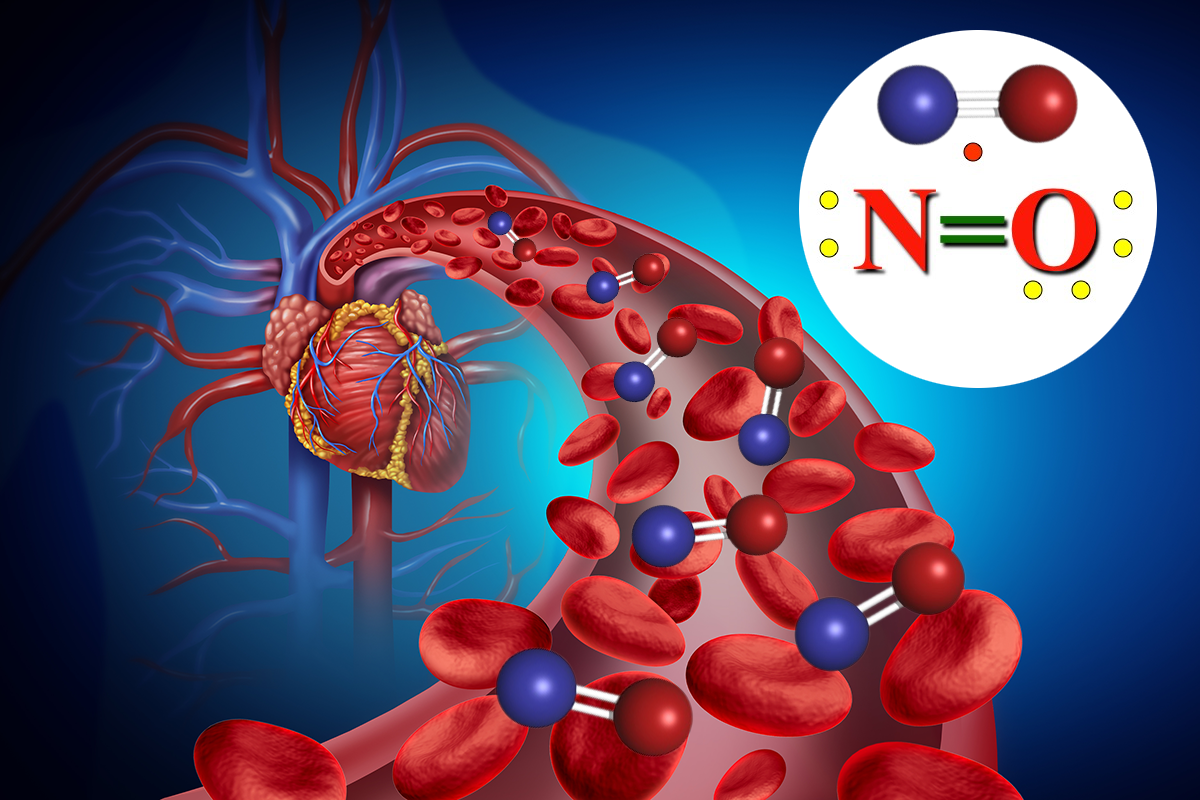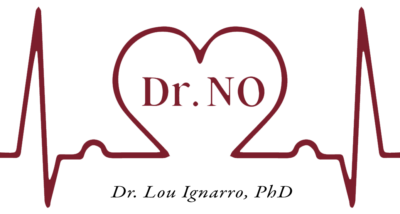
Nitric Oxide functions as a widespread signaling molecule throughout the body. Some of the roles or functions of NO include the following:
- Vasodilation to decrease blood pressure and improve organ blood flow
- Prevent unwanted blood clotting and obstruction to blood flow in arteries
- Anti-inflammatory action in arteries to maintain a healthy arterial inner lining without cholesterol plaque buildup
- Promotes learning, memory and information recall in the brain
- Aids in the digestive process by promoting movement of digested foods and regulating secretion of digestive hormones and enzymes
- Regulates bladder function by allowing the bladder to expand and hold more urine
- Promotes erectile function and sexual arousal in men and women
- Protects the skin against ionizing radiation from the sun. In addition, NO functions as a signaling molecule in concert with many other molecules and hormones in the body to maintain normal bodily functions
Many disorders and diseases are associated with a decline in NO production as we age. In some cases, it is known that the decrease in NO actually causes the disorder. More research in the future will likely show that lower NO levels causes many more disorders. A variety of lifestyle habits have a direct impact on NO levels and risk factors for disease.
Here are some examples of the association between lower NO levels and disease states:
- Hypertension or high blood pressure
- Stroke
- Myocardial infarction or heart attack
- Dementia such as Alzheimer’s disease
- Irritable bowel and related disorders in the digestive tract
- Urinary incontinence especially in elderly women
- Erectile dysfunction including sexual arousal disorders in men and women
Decreased NO production places an individual at increased risk for disease. For example, poor eating habits and nutrition can lead to overweight and obesity, all of which cause a long-term decline in NO production and an accompanying increased risk for type-2 diabetes, stroke and heart attack. It is believed that such a decrease in NO production can also cause increased risk for dementia, erectile dysfunction and other disorders.
Physical activity or exercise can promote both acute and chronic increases in NO production. Here’s how. As your heart pumps more blood through the arteries during exercise, the increased force of blood flow triggers the endothelial cells at the inner layer of arteries to produce more NO. The reason for this is that NO is a vasodilator and will greatly improve local blood flow to the exercising muscles, thereby delivering more oxygen and nutrients from the blood into the muscle cells. NO goes up every time you exercise to the level where your heart rate goes up by at least 10 or 20 beats/minute. You don’t have to run a marathon or bicycle up hill for hours to increase your NO production. Walking briskly, jogging slowly, climbing stairs, playing tennis, swimming will do the trick. This NO, which the body uses to improve exercise performance, is the same NO that provides profound health benefits over time. Therefore, the key is to exercise repetitively, that is, several times each week for a lifetime. This chronic increase in NO production is precisely the reason why “exercise is good for your health”.
____________________________________________________________________________
REFERENCES
Nitric Oxide: Biology and Pathobiology. 2nd Edition. Louis J. Ignarro, Editor. Elsevier, Inc., Copyright 2010. 26 Chapters; 845 pages.
Napoli C, Williams-Ignarro S, De Nigris F, Lerman LO, Rossi L, Guarino C, Mansueto G, Di Tuoro F, Pignalosa O, De Rosa G, Sica V, Ignarro LJ. Long-term combined beneficial effects of physical training and metabolic treatment on atherosclerosis in hypercholesterolemic mice. Proc Natl Acad Sci U S A. 2004 Jun 8;101(23):8797-802.
Napoli C, Stanley WC, Ignarro LJ. Nutrition and cardiovascular disease: putting a pathogenic framework into focus. Cardiovasc Res. 2007 Jan 15;73(2):253-6.
Napoli C, Ignarro LJ. Nitric oxide and pathogenic mechanisms involved in the development of vascular diseases. Arch Pharm Res. 2009 Aug;32(8):1103-8.
Puga GM, de P Novais I, Katsanos CS, Zanesco A. Combined effects of aerobic exercise and l-arginine ingestion on blood pressure in normotensive postmenopausal women: A crossover study. Life Sci. 2016 Mar 10. pii: S0024-3205(16)30141-2.
Suzuki T, Morita M, Kobayashi Y, Kamimura A. Oral L-citrulline supplementation enhances cycling time trial performance in healthy trained men: Double-blind randomized placebo-controlled 2-way crossover study. J Int Soc Sports Nutr. 2016 Feb 19;13:6.
Ranjbar K, Nazem F, Nazari A, Gholami M, Nezami AR, Ardakanizade M, Sohrabi M, Ahmadvand H, Mottaghi M, Azizi Y. Synergistic effects of nitric oxide and exercise on revascularisation in the infarcted ventricle in a murine model of myocardial infarction. EXCLI J. 2015 Oct 14;14:1104-15.
Glenn JM, Gray M, Wethington LN, Stone MS, Stewart RW Jr, Moyen NE. Acute citrulline malate supplementation improves upper- and lower-body submaximal weightlifting exercise performance in resistance-trained females. Eur J Nutr. 2015 Dec 11.
Lira VA. Exercise-induced cardioprotection: more to k‘NO’w. Cardiology. 2015;130(3):172-4.
Hannibal L. Nitric Oxide Homeostasis in Neurodegenerative Diseases. Curr Alzheimer Res. 2016;13(2):135-49.
Kodela R, Chattopadhyay M, Velázquez-Martínez CA, Kashfi K. NOSH-aspirin (NBS-1120), a novel nitric oxide- and hydrogen sulfide-releasing hybrid has enhanced chemo-preventive properties compared to aspirin, is gastrointestinal safe with all the classic therapeutic indications. Biochem Pharmacol. 2015 Dec 15;98(4):564-72.
Fernandes VS, Hernández M. The role of nitric oxide and hydrogen sulfide in urinary tract function. Basic Clin Pharmacol Toxicol. 2016 Feb 11.

